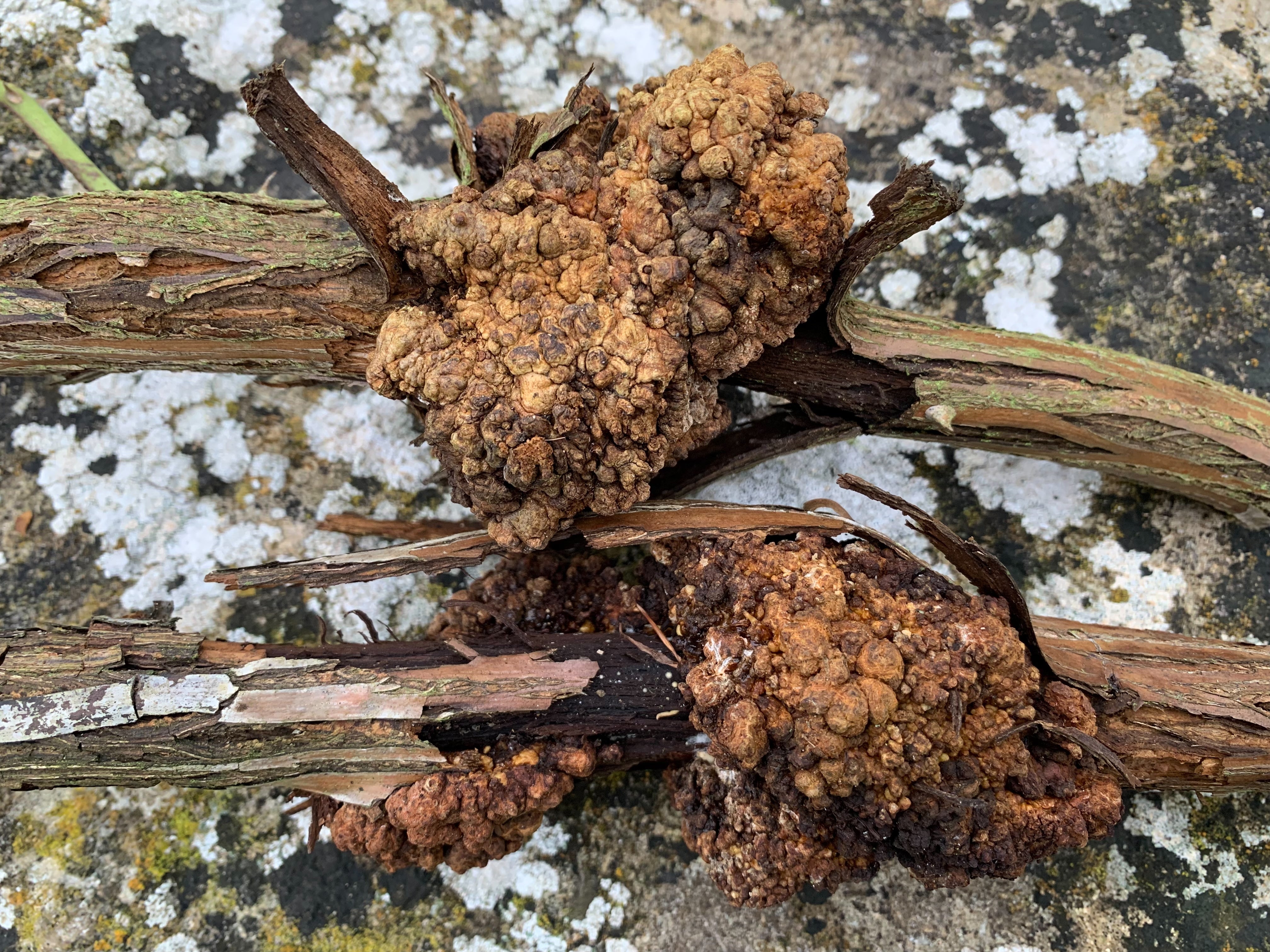Crown and Thorns

As you enter into the flower garden at Genus HQ you pass under a metal arch planted with a rose, clematis, and honeysuckle; a beautiful combination, scented, and often providing a nesting site for chaffinches or thrushes.
It’s unfortunate but this year we noticed a decline in the performance of the rose; fewer flowers and die-back on several stems. A meeting was called and convening over tea the decision to remove and replace the rose was made, so armed with secateurs and loppers we set about extricating the long stems from the snare-like grip of its neighbours. While clipping away it soon became apparent that our decision to remove was the correct one; half the stems were dying back, there were fungal bodies growing from the lower stems, and several were also infected with crown gall (pictured), a bacterial disease that can affect a wide range of garden plants, both perennial and woody.
A small strong spade made short work of the root system which despite being in situ for over ten years was soon removed. Due to rose replant disease we won’t be able to replace it with another rose in the same planting hole but come the new year the creamy-white, myrrh scented, climber ‘Claire Austin’ will be planted on the opposite side of the arch. It’s a medium sized rose that should hopefully amply cover the arch in two years.







